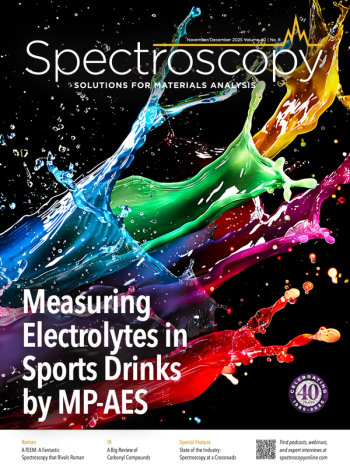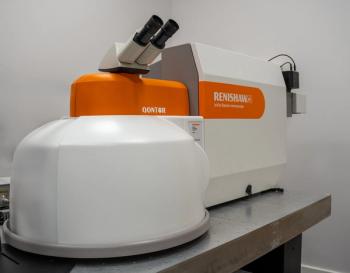
Greatest Hits Collection: IR Spectral Interpretation
Our IR Spectral Interpretation column contains some of the most popular articles, according to our readers.
Out of all the columns we publish on Spectroscopy, our IR Spectral Interpretation column has remained our most popular, according to our readers and subscribers. IR Spectral Interpretation columnist Brian C. Smith has an extensive background in infrared (IR) spectroscopy. With over 30 years of experience as an industrial IR spectroscopist, Smith’s expertise has helped many spectroscopists improve their IR analyses (1). Besides his work as a column editor for Spectroscopy, Smith is the founder and CEO of Big Sur Scientific, which makes portable mid-infrared (mid-IR) cannabis analyzers (1).
Below is a compilation of some of his most popular columns, according to our readers and subscribers. Happy reading!
In this IR Spectral Interpretation column, columnist Brian C. Smith studies carbonyl-containing polymers by examining the IR spectroscopy of esters and polyesters. It introduces the "Rule of Three," which identifies strong peaks at ~1700, ~1200, and ~1100 cm⁻¹ corresponding to C=O, C-C-O, and O-C-C stretching, respectively (1). The column discusses how these peaks differ between saturated and aromatic esters, aiding in their distinction (1). The spectra of key polyesters, including polyethylene terephthalate (PET) and polylactic acid (PLA), are analyzed, confirming their adherence to the Rule of Three (1). This analysis highlights the importance of IR spectroscopy in characterizing polymer structures.
In this IR Spectral Interpretation column, which was published in our January 2023 issue, columnist Brian C. Smith explored the infrared (IR) spectroscopy of acrylate polymers, focusing on polymethyl methacrylate (PMMA), commonly known as plexiglass. Acrylate polymers, derived from acrylic acid, feature diverse functional groups, including C=C and -COOH (2). Many of these polymers contain pendant ester groups, leading to characteristic peaks following the "Rule of Three" (~1700, ~1200, and ~1100 cm⁻¹) (2). The spectra of PMMA, its copolymer with polystyrene, and polymethyl methacrylate are analyzed, highlighting their ester-related peaks. This article illuminated the role of IR spectroscopy in distinguishing acrylate polymers and their copolymers in various applications.
In this edition of IR Spectral Interpretation, columnist Brian C. Smith explores the physical and quantum mechanical principles behind IR absorbance. It explains how IR absorption can be understood through two perspectives. The first perspective is as a wave, where an electric vector excites molecular vibrations, and the second perspective is as a particle, where a photon transfers energy upon collision (3). The discussion highlights how these interactions produce different peak types in IR spectra (3). The column concludes by examining the three main types of IR spectral features—fundamental, overtone, and combination bands—emphasizing their significance in identifying molecular structures through group wavenumbers (3).
In this IR Spectral Interpretation column, which was published in the first issue of 2025, columnist Brian C. Smith introduces the basic theory of molecular vibrations, focusing on normal modes—the fundamental vibrations of molecules. The number of normal modes depends on a molecule’s structure and atom count (4). Infrared (IR) spectroscopy primarily detects functional groups, as molecular vibrations are localized to distinct chemical regions (4). Symmetry influences the number of peaks observed in an IR spectrum, demonstrated through polyethylene. This discussion provides a foundational understanding of how IR spectroscopy identifies functional groups and interprets molecular structure, consolidating key concepts for readers new to the topic or in need of a refresher (4).
In this IR Spectral column, columnist Brian C. Smith examined the infrared (IR) spectroscopy of hydrocarbons, focusing on the stretching and bending vibrations of methyl (CH₃) and methylene (CH₂) groups. It explains how C-H stretching peaks between 3000 and 2850 cm⁻¹ reveal the presence of these functional groups (5). The discussion also covers aromatic hydrocarbons, detailing how mono- and disubstituted benzene rings can be distinguished by their C-H wagging and ring-bending peaks (5). This column was designed to improve our understanding of how IR spectroscopy differentiates hydrocarbon structures based on their vibrational signatures.
References
- Smith, B. C. Infrared Spectroscopy of Polymers, VIII: Polyesters and the Rule of Three. Spectroscopy 2022, 37 (10), 25–28. DOI:
10.56530/spectroscopy.ta9383e3 - Smith, B. C. Infrared Spectroscopy of Polymers X: Polyacrylates. Spectroscopy 2023, 38 (1), 10–14. DOI:
10.56530/spectroscopy.mi9381w4 - Smith, B. C. The Big Review II: The Physical Mechanism of Infrared Absorbance and Peak Types. Spectroscopy 2024, 39 (7), 28–33. DOI:
10.56530/spectroscopy.kj1475f8 - Smith, B. C. The Big Review III: Molecular Vibration Theory. Spectroscopy 2024, 39 (8), 31–34. DOI:
10.56530/spectroscopy.gn8689j7 - Smith, B. C. The Big Review IV: Hydrocarbons. Spectroscopy 2025, 40 (1), 16–19. DOI:
10.56530/spectroscopy.vt7783b7
Newsletter
Get essential updates on the latest spectroscopy technologies, regulatory standards, and best practices—subscribe today to Spectroscopy.



